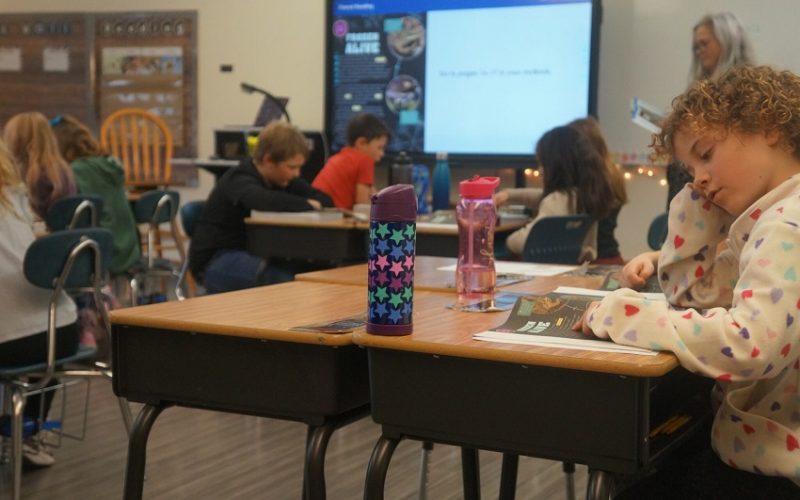Salem, OR – Since 2023, more than 250 schools in Oregon have received portions of the state’s $90 million Early Literacy Success Initiative grants, aimed at enhancing elementary reading programs across the state. The funds have been used to implement new reading curricula, provide tutoring, support after-school programs, and train teachers in scientifically-backed reading methods.
Now, as Governor Tina Kotek proposes additional funding to the program, some literacy advocates are urging the state to direct more resources to the schools with the highest need. The governor is requesting $100 million in the upcoming two-year budget cycle to further expand these efforts. While Kotek’s proposal includes adjustments to the program, literacy advocates are pushing for more targeted funding for the state’s most underperforming schools.
The Early Literacy Success Initiative, launched in 2023, has aimed to close the gap in literacy achievement that persists in Oregon. According to recent reports, nearly two in five fourth graders and one in five eighth graders in the state have scored “below basic” on the National Assessment of Educational Progress (NAEP), highlighting widespread struggles in reading comprehension. This lack of progress has sparked concerns about the effectiveness of the current approach to teaching reading in Oregon schools.
The problem, advocates say, lies in the lack of uniformity in teacher preparation. For the past 25 years, Oregon’s nearly 10,000 elementary school teachers have been trained using various methods, many of which are outdated or not aligned with current research on how children learn to read. A recent report from the National Council on Teacher Quality found that many Oregon colleges are failing to adequately prepare teachers for the complexities of reading instruction.
In response, Governor Kotek’s new proposal — House Bill 3040 — would adjust the framework of the Early Literacy Success Initiative to allow schools to use grant funds for training classroom assistants, as well as teachers and administrators. It would also ensure that any new reading curriculum for grades K-5 aligns with materials approved by the State Board of Education. Additionally, the bill proposes the creation of a regional network of literacy experts within the Oregon Department of Education, who would provide ongoing support to school and district literacy specialists.
While these updates have been welcomed by some, literacy advocates, particularly those at Oregon Kids Read, are pushing for even more focused action. In a recent open letter to lawmakers, over 100 educators called for 20% of the additional $100 million in grant funding to be directed toward the 42 schools with the highest literacy needs. These schools, located in communities with higher-than-average percentages of Black, Latino, Indigenous, and low-income students, have consistently reported large numbers of third- to fifth-graders reading below grade level.
The 42 identified schools have been performing below state averages for years, with many showing high concentrations of students from underrepresented backgrounds. Among the schools on the list are Caesar Chavez K-8 in Portland and Washington Elementary in Salem. The Salem-Keizer School District, the second-largest in Oregon, is home to the largest number of these high-need schools.
Oregon Kids Read’s proposal would allocate $20 million of the proposed $100 million in funding specifically to these 42 schools. The organization suggests that this money be used to hire literacy tutors who could work with struggling readers throughout the school year. While the total amount would not be sufficient to support every child in these schools, advocates argue it would be a significant step toward addressing the literacy gap.
The push for targeted funding comes in the wake of similar actions in other states. In 2017, students in several Los Angeles-area school districts sued the state of California for failing to provide adequate literacy instruction. In 2020, the state reached a settlement agreement, agreeing to allocate $50 million to improve literacy programs in the state’s lowest-performing elementary schools.
Advocates like Angela Uherbelau, founder of Oregon Kids Read, argue that without additional accountability, Oregon’s literacy funding will fail to make a meaningful impact. “The buck stops at the state,” Uherbelau said. “We need to make sure that funding is directed to where it will have the greatest effect — in the schools that need it most.”
As the legislature prepares to vote on House Bill 3040, the debate continues over how best to allocate resources to Oregon’s most underperforming schools. With the state’s literacy crisis affecting thousands of students, advocates hope that targeted funding, combined with rigorous training in the science of reading, will help turn the tide and ensure all Oregon children have the opportunity to succeed in reading.











